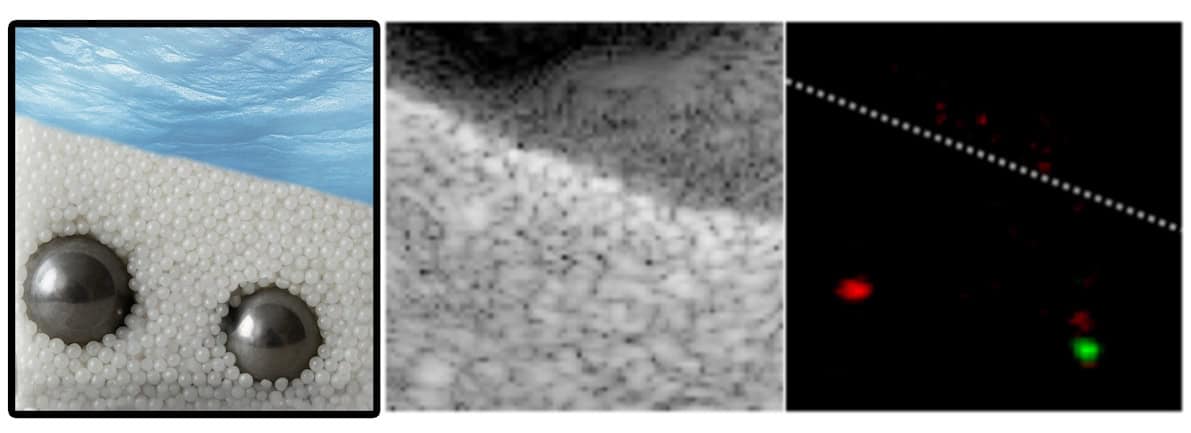 <><>
<><>Physicists have developed a novel imaging technique for detecting and characterizing objects hidden within opaque, highly scattering material. The researchers, from France and Austria, showed that their new mathematical approach, which utilizes the fact that hidden objects generate their own complex scattering pattern, or “fingerprint”, can work on biological tissue.
Viewing the inside of the human body is challenging due to the scattering nature of tissue. With ultrasound, when waves propagate through tissue they are reflected, bounce around and scatter chaotically, creating noise that obscures the signal from the object that the medical practitioner is trying to see. The further you delve into the body the more incoherent the image becomes.
There are techniques for overcoming these issues, but as scattering increases – in more complex media or as you push deeper through tissue – they struggle and unpicking the required signal becomes too complex.
The scientists behind the latest research, from the Institut Langevin in Paris, France and TU Wien in Vienna, Austria, say that rather than compensating for scattering, their technique instead relies on detecting signals from the hidden object in the disorder.
Objects buried in a material create their own complex scattering pattern, and the researchers found that if you know an object’s specific acoustic signal it’s possible to find it in the noise created by the surrounding environment.
“We cannot see the object, but the backscattered ultrasonic wave that hits the microphones of the measuring device still carries information about the fact that it has come into contact with the object we are looking for,” explains Stefan Rotter, a theoretical physicist at TU Wien.
Rotter and his colleagues examined how a series of objects scattered ultrasound waves in an interference-free environment. This created what they refer to as fingerprint matrices: measurements of the specific, characteristic way in which each object scattered the waves.
The team then developed a mathematical method that allowed them to calculate the position of each object when hidden in a scattering medium, based on its fingerprint matrix.
“From the correlations between the measured reflected wave and the unaltered fingerprint matrix, it is possible to deduce where the object is most likely to be located, even if the object is buried,” explains Rotter.
The team tested the technique in three different scenarios. The first experiment trialled the ultrasound imaging of metal spheres in a dense suspension of glass beads in water. Conventional ultrasound failed in this setup and the spheres were completely invisible, but with their novel fingerprint method the researchers were able to accurately detect them.
Next, to examine a medical application for the technique, the researchers embedded lesion markers often used to monitor breast tumours in a foam designed to mimic the ultrasound scattering of soft tissue. These markers can be challenging to detect due to scatterers randomly distributed in human tissue. With the fingerprint matrix, however, the researchers say that the markers were easy to locate.
Finally, the team successfully mapped muscle fibres in a human calf using the technique. They claim this could be useful for diagnosing and monitoring neuromuscular diseases.
According to Rotter and his colleagues, their fingerprint matrix method is a versatile and universal technique that could be applied beyond ultrasound to all fields of wave physics. They highlight radar and sonar as examples of sensing techniques where target identification and detection in noisy environments are long-standing challenges.
“The concept of the fingerprint matrix is very generally applicable – not only for ultrasound, but also for detection with light,” Rotter says. “It opens up important new possibilities in all areas of science where a reflection matrix can be measured.”
The researchers report their findings in Nature Physics.
The post Fingerprint method can detect objects hidden in complex scattering media appeared first on Physics World.

